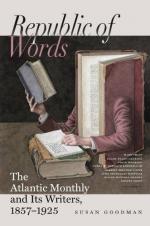Beside statuary and paintings, an institution of this nature should contain specimens of every kind of industry in which art is the primary inspiration, to illustrate the qualities and degrees of social refinement in nations and eras. This would include every variety of ornamental art in which invention and skill are conspicuous, as well as those works more directly inspired by higher motives and intended as a joy forever. Architecture and objects not transportable could be represented by casts or photographs. Models, drawings, and engravings also come within its scope; and there should be attached to the parent gallery a library of reference and a lecture- and reading-room.
Connected with it there might be schools of design for improvement in ornamental manufacture, the development of architecture, and whatever aids to refine and give beauty to social life, including a simple academic system for the elementary branches of drawing and coloring, upon a scientific basis of accumulated knowledge and experience, providing models and other advantages not readily accessible to private resources, but leaving individual genius free to follow its own promptings upon a well-laid technical foundation. As soon as the young artist has acquired the grammar of his profession, he should be sent forth to study directly from Nature and to mature his invention unfettered by authoritative academic system, which more frequently fosters conventionalism and imposes trammels upon talent than endows it with strength and freedom.
Such is a brief sketch of institutions feasible amongst us from humble beginnings by individual enterprise. Once founded and their value demonstrated, the countenance of the state may be hopefully invoked. Their very existence would become an incentive to munificent gifts. Individuals owning fine works of art would grow ambitious to have their memories associated with patriotic enterprise. Art invokes liberality and evokes fraternity. The sentiment, that there is a common property in the productions of genius, making possession a trust for the public welfare, will increase among those by whose taste and wealth they have been accumulated. Masterpieces will cease to be regarded as the selfish acquisitions of covetous amateurs, but, like spoken truth, will become the inalienable birthright of the people,—finding




